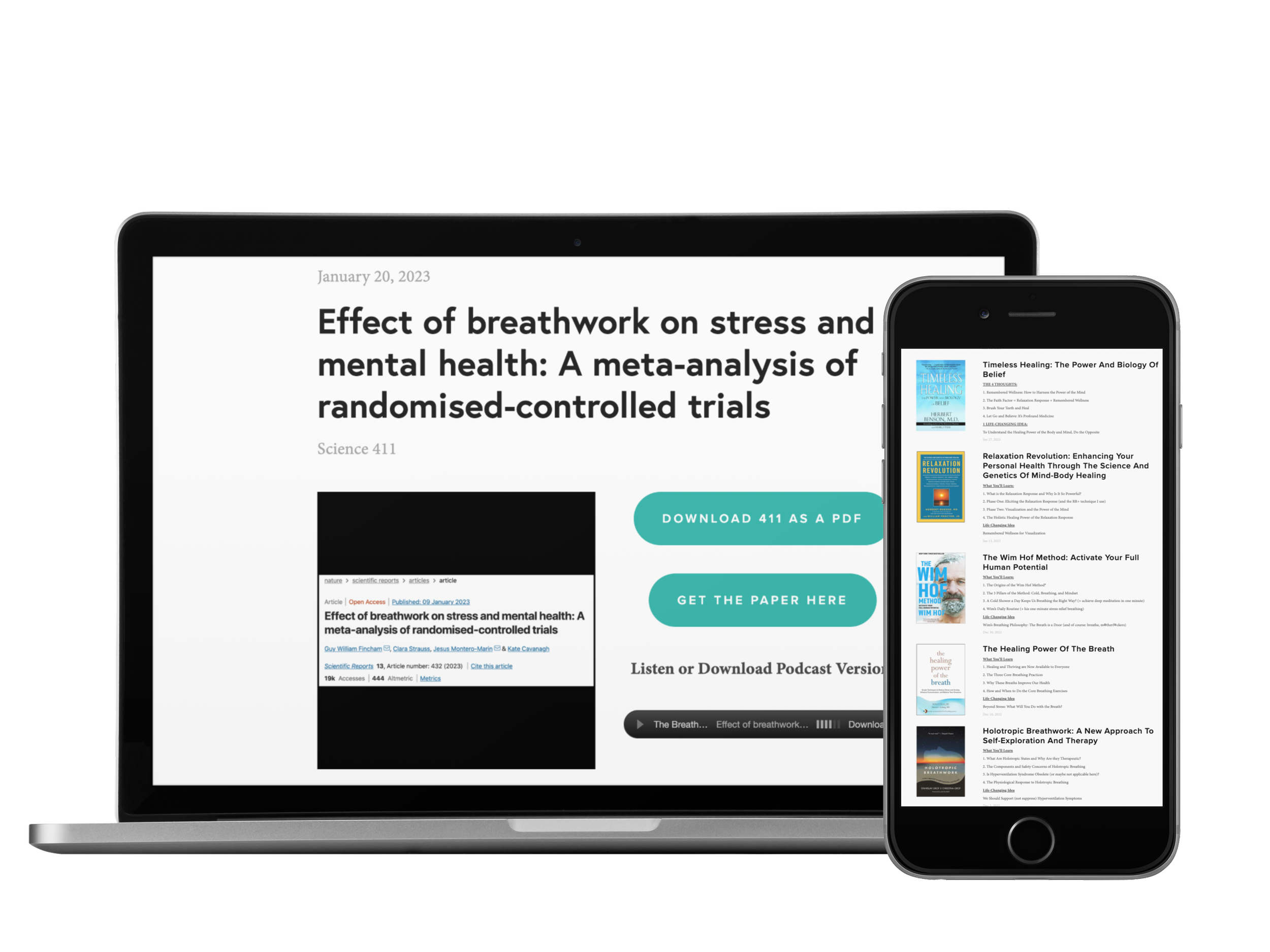Listen Instead of Reading
If you enjoy listening, you can subscribe to the audio version on Spotify, Apple Podcasts, and Audible so you don’t even have to look at the email 😊
4 THOUGHTS
1. The Power of Breath Awareness (a joyful abiding in the here & now)
“The breath accompanies you the full length of life’s road: you learn about the body, feelings, mental formations, the mind itself, and, finally, the lawfulness of impermanence and emptiness of a substantial self.”
- Larry Rosenberg, Three Steps to Awakening
This passage beautifully highlights the power of breath awareness.
And perhaps this power is why the Buddha formally practiced mindful breathing, even after attaining enlightenment:
“Even after full enlightenment, the Buddha himself set aside personal retreat time for the practice of mindfulness of breathing, calling it ‘a joyful abiding in the here and now.’”
Here’s to using our breath to joyfully abide in the here and now a little more this week 🙏
2. Change How You Feel (almost instantaneously)
“Our breathing pattern can have an enormous effect on our psycho-physical state. This means that changing the way we breathe can literally change the way we feel, almost instantaneously. Want to be relaxed? Breathe like you already are.”
– Charlie Morley, Wake Up to Sleep
I’ve shared passages like this probably a dozen times now. But it never gets old, because it’s the most powerful part of breathing: we can almost instantaneously change how we feel anytime, anywhere.
Make sure you use this amazing gift at least once today 🙏
3. My 4 Favorite Newsletters
If you’re looking to diversify your wisdom, here are four of my favorite newsletters. There are many I enjoy, but I always read these four:
1. Light’s Daily Dose: This is my favorite one. It’s just a small inspirational wisdom nugget each day. It’s amazing. (Sign Up)
2. James Clear’s 3-2-1: You probably know this one. And of course, I copied his format ~3 years ago to create the “411” 😊 (Sign Up)
3. Brain Food: Random life-changing wisdom. A must-read every Sunday. (Sign Up)
4. Josh Spector’s Daily Email: The shortest email you’ll get. Sometimes it’s an idea, but usually a link to a cool resource. (Sign Up)
4. Five Breathing Products I Love
Although it’s hard for me to believe, people occasionally send me free breathing stuff. Here are some cool products I’ve tried and loved, in no particular order:
ResBiotic: Daily probiotic that targets the gut-lung access for better lung health. (Learn More)
Airofit: A super sophisticated resistance breathing device. (The one I use) (Here’s a cheaper Version that does same thing, just no bluetooth)
AER Filters: Gives our nose filtering a little boost. (UK store.) (If you’re in the US, you can get them on Amazon here.)
Anicca: A mindful breathing device. Don’t think it’s for sale to the public yet, but if you’re therapist of any kind, check it out. (Learn More)
BeWell “Breathing is Cool” Sweatshirt: Do yourself a favor, and go buy one of these right now. It’ll support an amazing cause, and you’ll have one of the coolest sweaters out there 🙏 (Link to Buy)
Breath is Life Learning Center
Learn & integrate different methods, philosophies, and approaches to breathing for better mental and physical health.
$14.99/month or $149/year
1 Quote
“May your adventures be truly great for as long as you take another breath. And may you live long as you seek to discover the wonders and the benefits that each breath has to offer in this, the journey of life.””
1 Answer
Category: Sneezing
Answer: This reflex is characterized by successive sneezing as the result of exposure to bright light.
…
(Cue the Jeopardy! music.)
…
Question: What is the photic sneeze reflex?
In good breath,
Nick Heath, T1D, PhD
“Breathing is the compound interest of health & wellness.”
* An asterisk by a quote indicates that I listened to this book on Audible. Therefore, the quotation might not be correct, but is my best attempt at reproducing the punctuation based on the narrator’s pace, tone, and pauses.
Sign Up For The Breathing 411
Each Monday, I curate and synthesize information from scientific journals, books, articles, and podcasts to share 4 thoughts, 1 quote, and 1 answer (like "Jeopardy!") related to breathing. It’s a fun way to learn something new each week.




